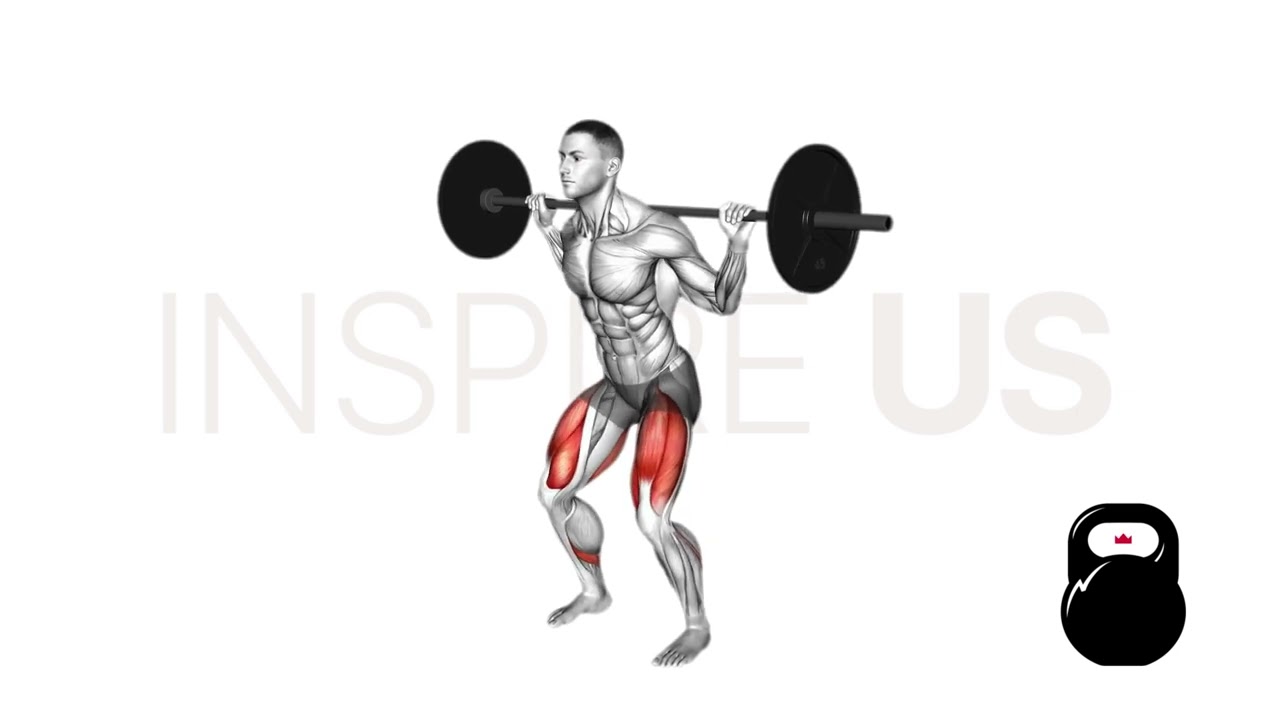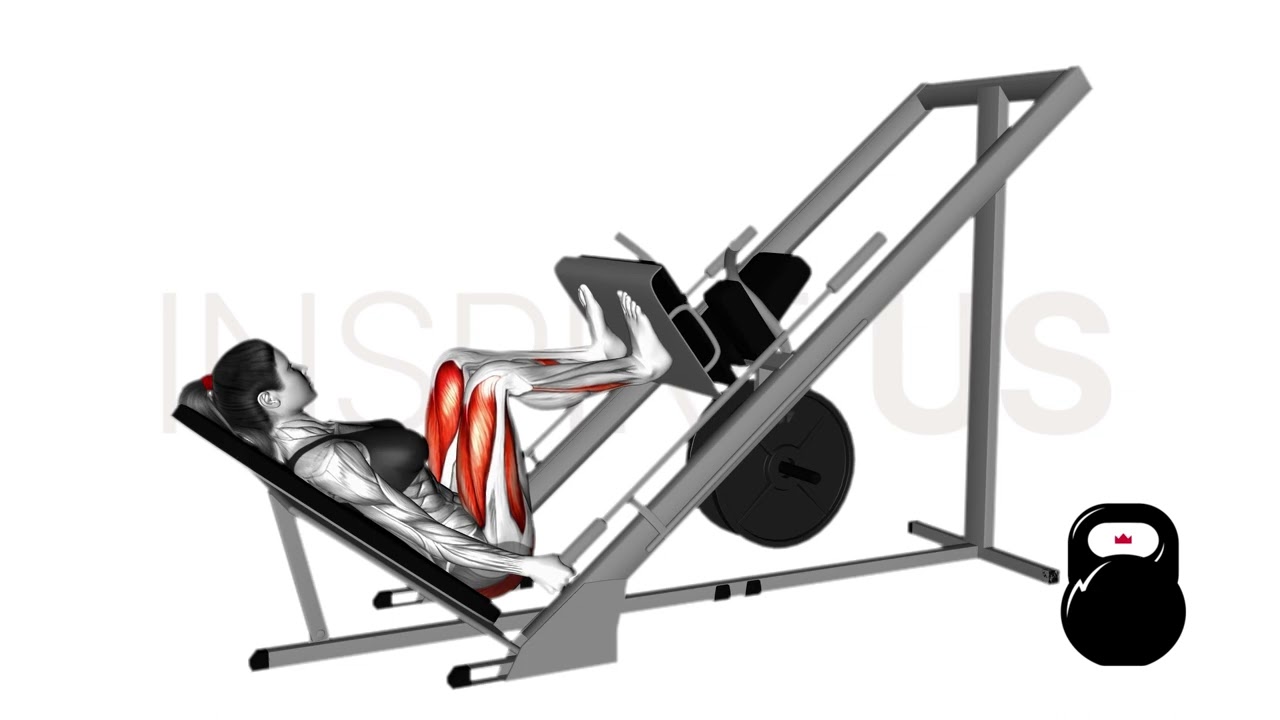Barbell Squat vs Leg Press: Differences Explained
An age-old debate exists concerning whether the barbell squat or leg press is the superior exercise.
Like many aspects of resistance training, the answer is somewhat more complicated than a simple yes or no. There is no doubt that both are solid lower body exercises of similar benefits, and in the end it comes down to the specific contexts in which they are performed.
In this article, we will outline the primary points of distinction between the barbell squat and the leg press - leaving you to come up with your own decisions as to which is the better exercise.
The Barbell Squat - an Overview
The barbell squat - also known as the back squat - is a compound free weight exercise of significant intensity.
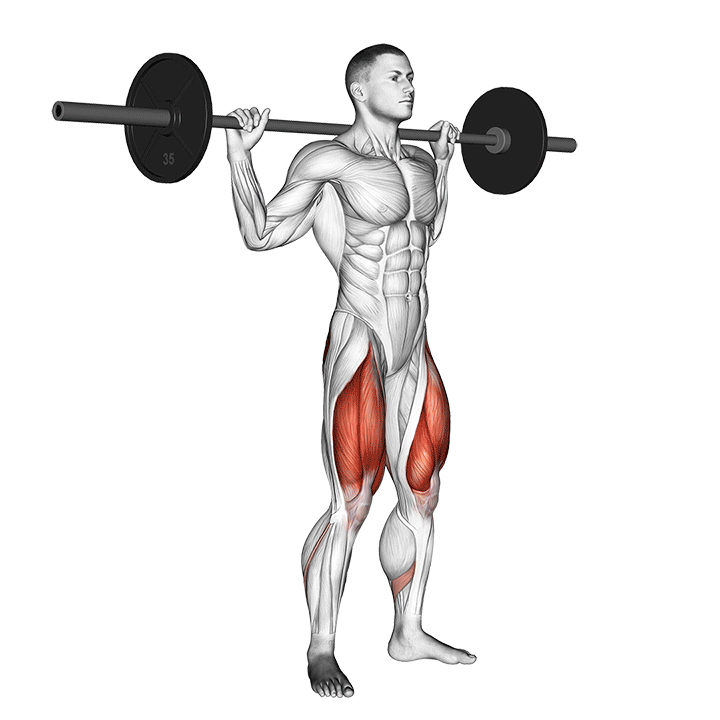
With a natural movement pattern and recruitment of every muscle group in the lower body, there’s no surprise as to why it is referred to as the “king of exercises”.
Barbell squats are performed for a variety of different purposes, but are most frequently programmed for low or moderate volume and high amounts of weight so as to build strength and muscle mass in the legs.
Equipment Needed
Barbell squats primarily require a barbell rack, a straight barbell and a set of weight plates.
Advantages
The barbell squat’s main advantage is its gross effectiveness as a training tool. Not only is it unparalleled for building mass and strength in the legs, but it also functions quite effectively as an athletic training tool as well.
Disadvantages
In terms of disadvantages, the barbell squat is comparatively more technical and dangerous than most other lower body exercises. This is on account of both its high loading potential and rather strict form requirements.
How-to:
To perform a repetition of the barbell squat, the lifter must unrack a loaded barbell and stand upright with their feet around hip-width apart.
The toes should be pointing forwards and the core braced so as to help protect the spine.
Now in the appropriate stance, the lifter will push their pelvis backwards as they bend at the knees - descending until their hip crease is at least parallel with the knees.
From this point of depth (“the hole”), the lifter will drive through their heels and push their pelvis forwards.
Once they have returned to an upright position, the repetition is complete.
The Leg Press - an Overview
The leg press is a multi-joint machine exercise with the capacity for both high volume and high resistance.
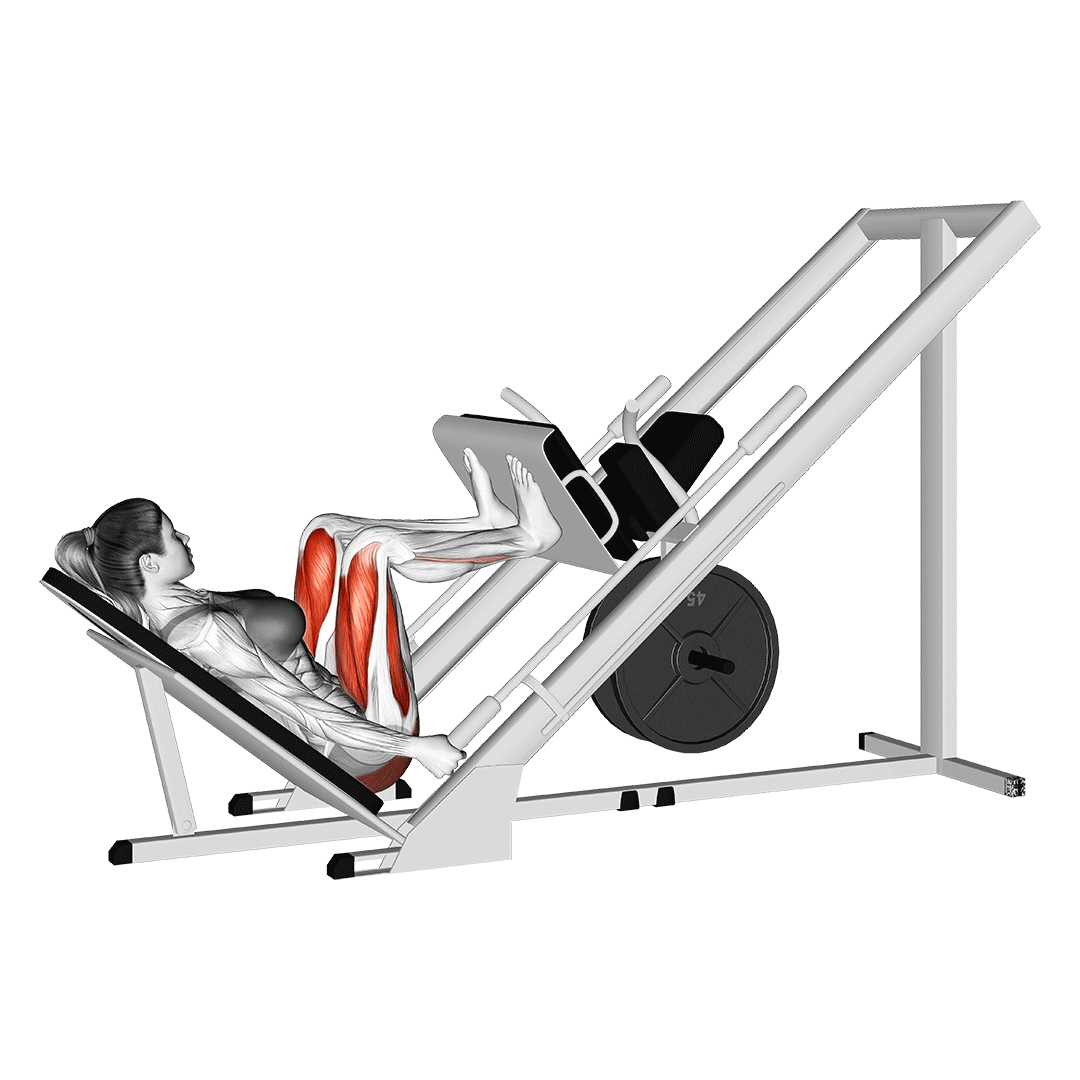
The leg press involves the lifter sitting within the machine and pressing a loaded sled away from them as they remain stationary. This can either be immediately horizontal in direction or angled upwards depending on the make of the leg press machine.
Leg presses are primarily performed for building strength and mass in the muscles of the lower body - particularly the quadriceps - but have also been used for rehabilitation and occasional athletic training.
Equipment Needed
The leg press will require a leg press machine. Unless featuring built-in resistance, the machine will also need to be loaded with weight plates as well.
Advantages
The main advantage of the leg press is its simplicity. With a few minutes of practice, even complete novices to weightlifting can perform the exercise safely.
In addition, the leg press is particularly effective for working the muscles at the front of the thighs (the quadriceps) in an intense manner.
Disadvantages
In terms of disadvantages, the primary issue with the leg press is its inapplicability to real world movement patterns. This disadvantage, compounded with its machine-based nature, makes it a poor exercise for building functional lower body strength and power.
How-to:
To perform a repetition of the leg press, the lifter will seat themselves within the machine, feet approximately shoulder-width apart in the center of the sled.
For alternative foot positioning, see our article on the different leg press foot placements.
Now appropriately positioned within the leg press machine, the lifter will disengage the safety handles and push the sled out of its safety hooks.
With the sled now entirely held by the lifter’s legs, they will bend at the knees and slowly lower the plate towards them.
Once the knees are bent as much as their mobility allows, the lifter will drive through their heels and extend their legs back out - thereby completing the repetition.
Remember to contract the core and to keep the lower back in a neutral orientation throughout the exercise.
Leg Press vs Barbell Squat - Muscular Recruitment
Both the leg press and barbell squat work much the same muscles - those being the quadriceps femoris, glutes and hamstrings.
However, the emphasis of either exercise differs. This point of distinction is primarily due to the differences in range of motion between the two exercises, as well as the sort of stance the lifter adopts when performing them.
If you are attempting to decide between the leg press and barbell squat, this is the first metric you should examine.
Primary Muscular Emphasis
The leg press places far greater emphasis on the quadriceps muscles than the barbell squat.
While this can be altered by simply changing your foot position on the plate, the conventional leg press stance targets the quadriceps to a degree far greater than the posterior chain muscles.
In comparison, the barbell squat is far better at working the muscles of the glutes and hamstrings.
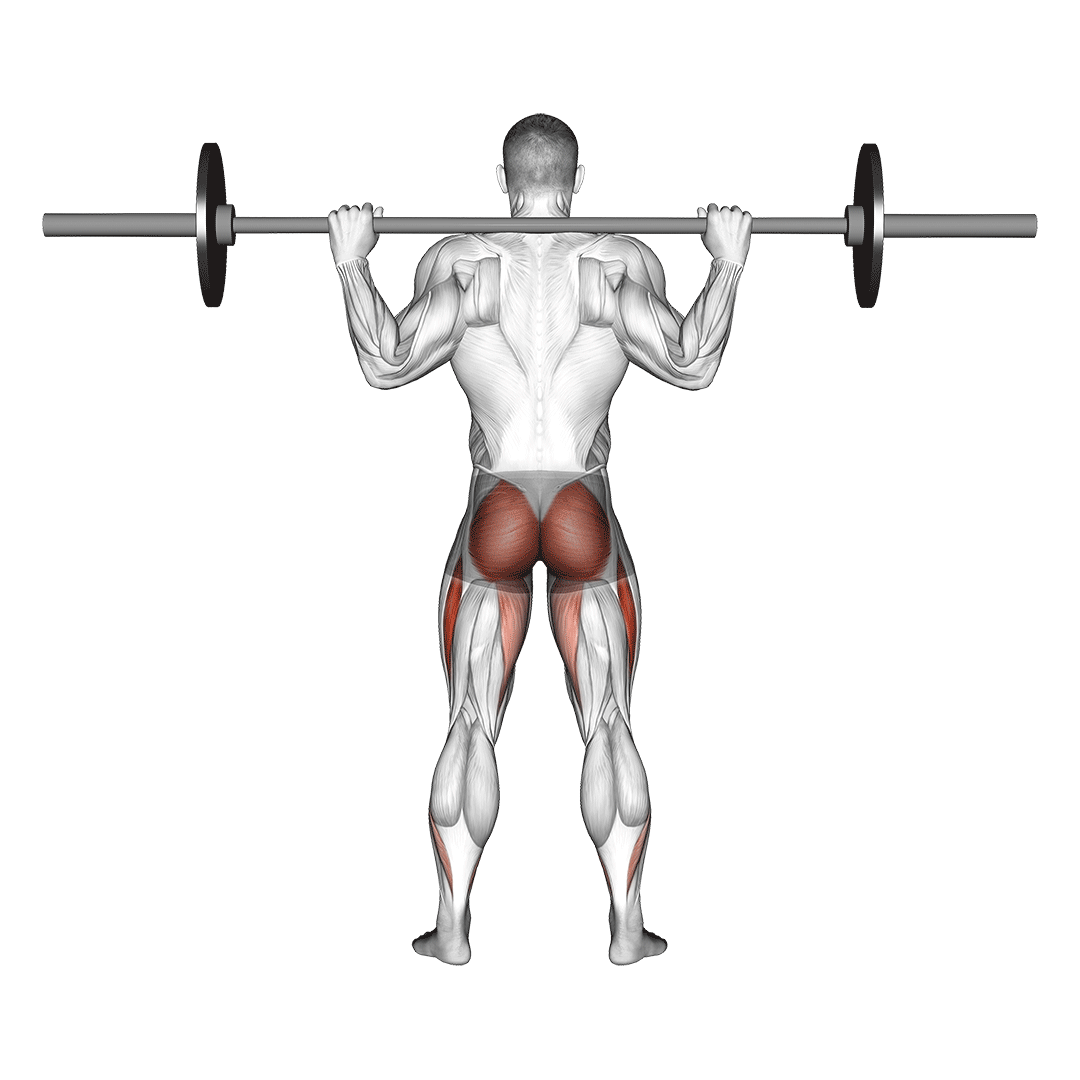
Not to say that the squat doesn’t effectively work the quadriceps too - only that it excels at training the posterior chain in comparison to the leg press.
Usage of Stabilizer Muscles
Stabilizer muscles are simply the muscles that play a minor static role during a movement pattern. Between the leg press and squat, it is the muscles of the core and erector spinae that play this role.
In the case of the leg press and squat debate, the squat wins out in this category on account of being a free weight exercise.
When we compare the squat with the self-stabilizing resistance encountered during a leg press repetition, it makes sense to say that the leg press just barely works its stabilizer muscles at all.
Reduced stabilizer muscle recruitment isn’t necessarily a bad thing, however. If maximizing weight lifted is your goal, the leg press is the better choice as it diverts more energy towards the mobilizer muscles instead.
Leg Press vs Barbell Squat - Safety, Accessibility, and Stability
Apart from muscular recruitment, the leg press and back squat differ in terms of their safety and accessibility.
These aspects are vital for creating a safe and effective workout, and can be the deciding factor for workouts involving disabled, inexperienced or previously injured weightlifters.
Which Exercise is Safer?
Across the board, the leg press is considered to be the safer exercise.
Not only does it feature more built-in safety mechanisms and a shorter range of motion, but the position of the lifter within the machine also helps mitigate severe injury in the case of poor form adherence.
While this doesn’t mean performing the leg press is entirely risk-free, it does mean it is the better exercise for novice weightlifters.
In comparison, the barbell squat is considerably more dangerous and demanding in terms of form and mobility. Even when performed correctly, the barbell squat creates vertically angled pressure atop the spinal column, and requires significant mobility in the ankles, hips and back.
Which Exercise is More Accessible?
The accessibility of either exercise is more situational than their safety differences.
In truth, the leg press is a far more bulky and costly piece of machinery than a simple barbell and squat rack. Furthermore, the general movement pattern of the squat is more aligned with natural squatting movement patterns than the leg press.
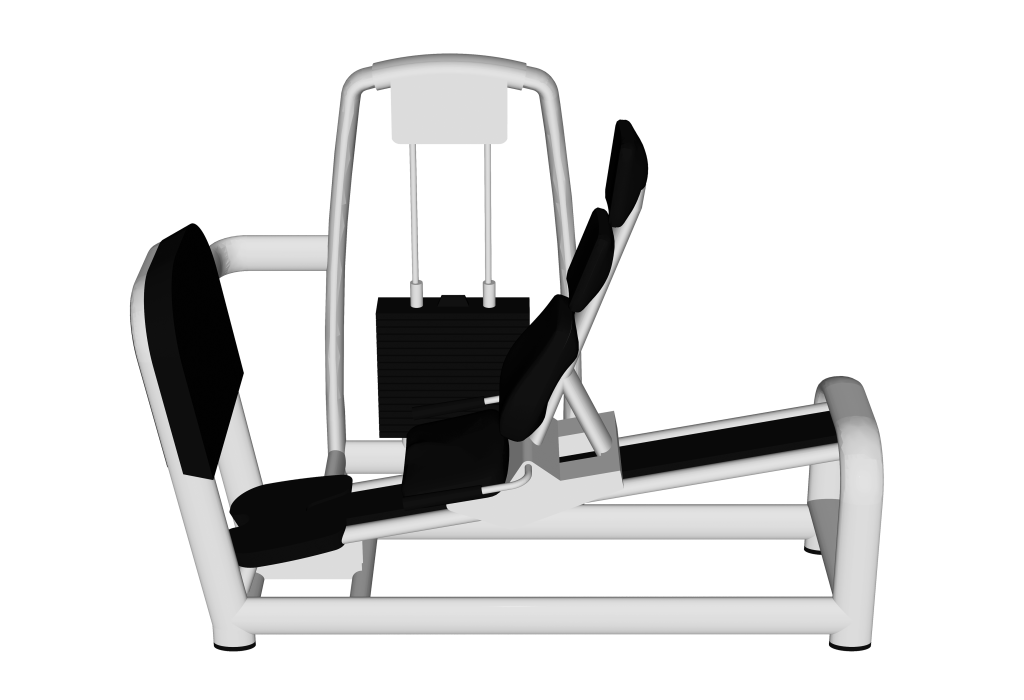
However, the leg press is somewhat easier to learn than the squat, and requires far less technical familiarity or physical mobility.
As such, either exercise is considered to be moderately accessible - but only to different types of lifters. The leg press is better for novice weightlifters with access to the right equipment, whereas the squat is suitable for more experienced weightlifters or those on a budget.
Which Exercise is More Suitable for Individuals With Poor Stability?
In terms of stability requirements, the leg press is the more forgiving choice.
As previously mentioned, the leg press is self-stabilizing in nature, and requires far less usage of stabilizer musculature to perform correctly.
Leg Press vs Barbell Squat - Loading Potential and Range of Motion
The leg press and the barbell squat differ in terms of how much weight they can safely be performed with.
Also known as maximal loading capacity or loading potential, such distinction is derived from both stabilizer muscle usage and the range of motion of the exercise.
Maximum Weight Loading
Across the board, lifters will be able to move more weight with the leg press than they would be able to with the barbell squat.
This greater amount of weight loading potential is caused by the leg presses’ shorter range of motion and generally more efficient recruitment of the leg’s muscles.
While it will vary between lifters, some can leg press as much as 3 times more weight than they could with back squats for the same level of effort.
Leg Press and Squat ROM Differences
The term “ROM” or range of motion refers to the exact extent of a movement. For the squat and leg press, this refers to how far the legs (or pelvis) will bend during the exercise.
Although squat ROM depends on individual mobility and preference, it is most often performed to at least parallel depth - that is to say, the pelvis is parallel to the knees at the lowest point of the movement. This effectively guarantees proper recruitment of the glutes and hamstrings.
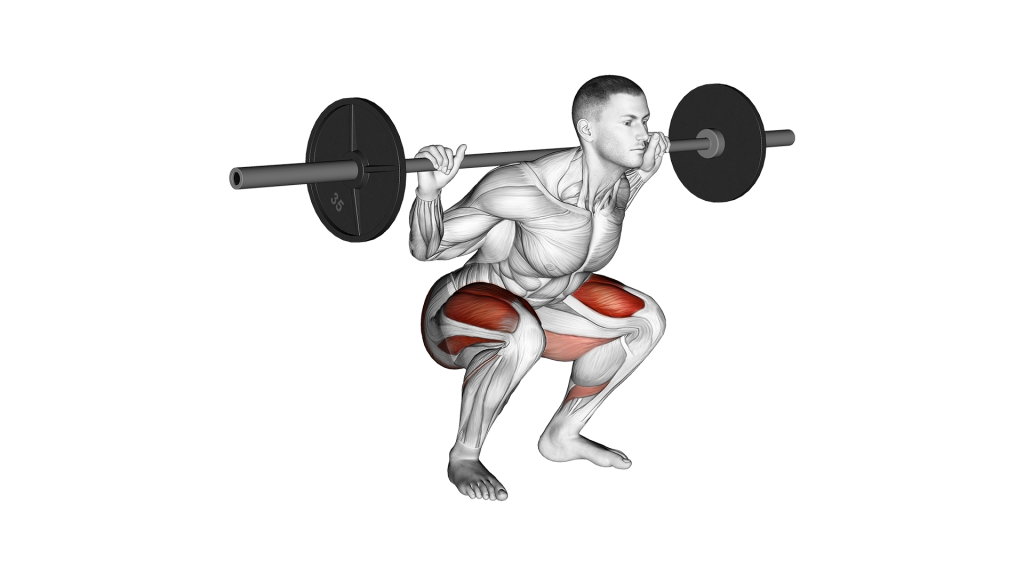
In comparison, the leg press features a shorter range of motion because of the lifter’s own body getting in the way of their legs - hence why more weight can be lifted and the posterior chain is recruited to a lesser extent.
Leg Press vs Barbell Squat - Use Cases, Carryover, and Applicability
Tallying all the differences up between the two exercises, we can come to the conclusion that one is better for certain purposes than the other, and vice versa.
Ideal Use Case for Barbell Squat
The barbell squat is perhaps the most ideal lower body exercise for building power and functional strength. Few can compete with its comprehensive and intense recruitment, and its actual intensity as a training tool.
Although it is not quite as safe or has the same capacity for volume as the leg press, the barbell squat is ideal for powerlifters, other types of strength athletes or individuals who want to train their entire lower body simultaneously.
Ideal Use Case for the Leg Press
The ideal use case for the leg press is quadriceps-focused mass building - that, or as an alternative to the barbell squat for individuals who cannot perform it.
The more forgiving and lower-impact nature of the leg press allows it to be more accessible to a wider audience of lifters, but also causes it to be less useful as a training tool for building strength and similar physical aspects.
Athletic and Non-Lifting Carryover Potential
For athletes or individuals who work physically demanding jobs, the barbell squat is the better choice.
Not only does it feature greater stabilizer muscle development, but its movement pattern and wider range of motion are more applicable to real-world physical activities.
Can You Do Both Leg Press and Squats?
If you can’t decide between the leg press or the barbell squat, one way to go about things is to perform both exercises.
Because of the fact that squats are more intense and demanding, it is best to perform them first and for greater amounts of weight.
After, the leg press may be performed as a secondary exercise - complete with reduced resistance and relatively higher volume.
Sample Structure:
Barbell Squat: 3 sets of 5 repetitions - 80-90% of 1RM
Leg Press: 2 sets of 16 repetitions - 50-60% of 1RM
Complete Workout With 1-3 Leg and Core Accessory Exercises
Frequently Asked Questions (FAQ)
Can the Leg Press Replace the Barbell Squat?
Unless you’re replacing the barbell squat due to mobility or form issues - not quite. The leg press falls behind the barbell squat in terms of posterior chain recruitment and functionality.
How Much Stronger is the Leg Press Than the Squat?
Some lifters can add as much as 2-3 times their squat total to the leg press. This is caused by the shorter range of motion of the leg press, and can be an invaluable advantage if used correctly.
Why is the Barbell Squat Harder Than the Leg Press?
The barbell squat is more difficult than the leg press because of a wider range of motion - as well as the fact that squats work more muscles to a greater degree of intensity.
The Verdict, Which is Better?
While we began this article stating that it is up to you to decide the better exercise - we do have one piece of advice to abide by.
Pick the right exercise that fits your training needs, rather than whichever one seems “better”.
Match which muscles you wish to train with the exercise that better emphasizes them, and consider whether you’re experienced/conditioned enough to perform your choice of exercise.
Regardless of your chosen movement - the squat or the leg press - remember to perform the exercise with proper form as the priority, and to seek professional advice if you’re unsure of something.
References
1. Rossi, Fabrício & Schoenfeld, Brad & Ocetnik, Skyler & Young, Jonathan & Vigotsky, Andrew & Contreras, Bret & Krieger, James & Miller, Michael & Cholewa, Jason. (2016). Strength, body composition, and functional outcomes in the squat versus leg press exercises. The Journal of sports medicine and physical fitness. 58. 10.23736/S0022-4707.16.06698-6.
2. Wirth K, Keiner M, Hartmann H, Sander A, Mickel C. Effect of 8 weeks of free-weight and machine-based strength training on strength and power performance. J Hum Kinet. 2016 Oct 15;53:201-210. doi: 10.1515/hukin-2016-0023. PMID: 28149424; PMCID: PMC5260589.
3. Wirth, Klaus et al. “The Impact of Back Squat and Leg-Press Exercises on Maximal Strength and Speed-Strength Parameters.” Journal of strength and conditioning research vol. 30,5 (2016): 1205-12. doi:10.1519/JSC.0000000000001228
4. Rogers, Les MS, CSCS; Sherman, Todd. Leg Press Versus Squat. Strength and Conditioning Journal 23(4):p 63, August 2001.

